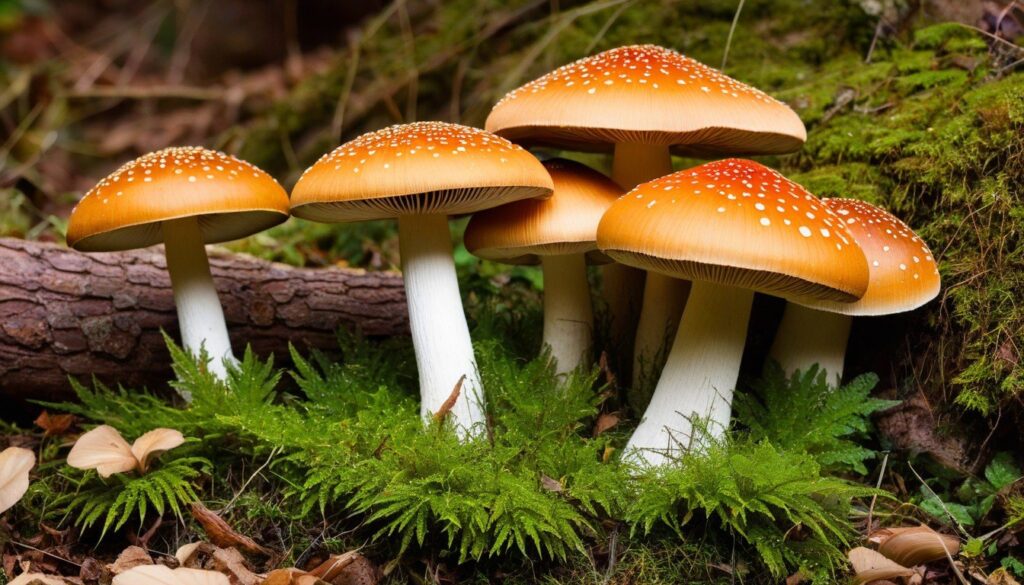If you’re following a gluten-free diet, it’s important to know which foods are safe to eat. For those who love mushrooms, you may be wondering whether or not they contain gluten. In this article, we’ll go over everything you need to know about mushrooms and gluten, including their nutritional value, potential risks of cross-contamination, and safe ways to enjoy them in your meals.
Key Takeaways:
- Mushrooms are naturally gluten-free and safe for those with gluten intolerance to consume
- A gluten-free diet requires avoiding common sources of gluten, such as wheat, barley, and rye
- It’s important to take precautions and understand potential cross-contamination risks when consuming mushrooms
- There are many delicious gluten-free mushroom recipes to enjoy
- Alternative protein sources can provide important nutrients for those following a gluten-free diet
What Is Gluten and Why Is It a Concern?
Gluten is a protein found in wheat, barley, and rye, and their derivatives. It provides elasticity to dough and helps it rise, providing that chewy texture. Gluten is not a concern for most people, but for those with celiac disease or gluten intolerance, it can cause digestive problems, nutrient deficiencies, and other health issues.
Celiac disease is an autoimmune disorder in which the ingestion of gluten leads to damage to the small intestine, impeding nutrient absorption. Gluten intolerance, sometimes called gluten sensitivity, describes a range of symptoms that some people experience after consuming gluten, even in small amounts.
As a result, individuals with celiac disease or gluten intolerance need to follow a strict gluten-free diet. This involves avoiding all foods that contain gluten and seeking out gluten-free alternatives.
Nonetheless, following a gluten-free diet can be very challenging, since gluten can be present in many unexpected products.
“It’s essential to understand the risks of consuming gluten-containing foods and take the appropriate precautions to stay safe.”
The Basics of Gluten-Free Diets
Gluten is a protein found in several grains such as wheat, barley, and rye. For individuals with gluten intolerance or celiac disease, consuming gluten can lead to serious health issues, which is why a gluten-free diet is necessary. Gluten-free diets involve avoiding all foods made with these grains or any product that may have come into contact with gluten during processing or preparation.
Foods to Avoid
The following foods should be avoided or checked for gluten content before consuming:
- Bread, pasta, and pastries made with wheat, barley, or rye
- Cereals, crackers, and granola bars containing gluten
- Beer and other alcoholic beverages made with hops, barley, or malt
- Soy sauce and certain types of condiments
- Processed meats such as sausages and hot dogs
Safe Alternatives
Fortunately, there are several safe alternatives for individuals following a gluten-free diet. These include:
- Foods made with gluten-free grains such as rice, corn, and quinoa
- Fruits, vegetables, and legumes
- Meats and fish that are not processed or coated in breadcrumbs
- Certain types of dairy products such as milk, cheese, and yogurt
- Gluten-free flours and baking mixes
Remember to always check food labels carefully for any hidden sources of gluten and to communicate any dietary restrictions to restaurants and foodservice providers to ensure safe dining experiences.
The Nutritional Value of Mushrooms
Mushrooms are an excellent addition to any balanced diet. In addition to being low in calories, fat, and sodium, they are also rich in nutrients, including:
Nutrient | Amount per 100g |
|---|---|
Protein | 3g |
Fiber | 1g |
Vitamin D | 10mcg |
B Vitamins (Riboflavin, Niacin, Pantothenic acid) | 10-15% of the Daily Value |
Minerals (Copper, Selenium, Potassium) | 10-15% of the Daily Value |
Mushrooms are also a source of antioxidants, which help protect your body from damage caused by harmful molecules called free radicals. Studies have shown that consuming mushrooms regularly can potentially reduce the risk of chronic diseases such as heart disease, diabetes, and certain cancers.
There are many different types of mushrooms, each with varying levels of nutrients. However, overall, mushrooms are a valuable addition to any diet, providing a range of essential vitamins and minerals to help you maintain good health.
Common Sources of Gluten
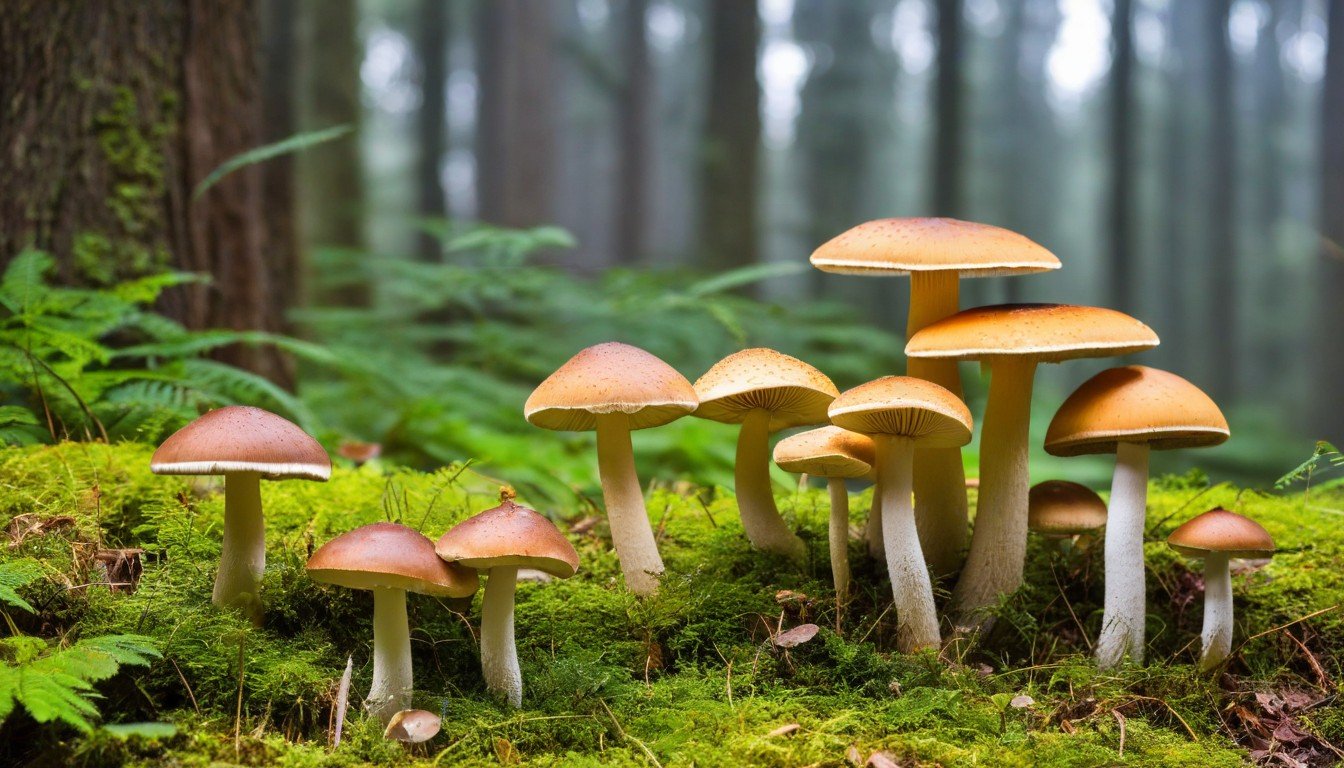
Gluten is a protein found in various grains, such as wheat, barley, and rye. It can also be present in many other food products, making it essential to read food labels carefully to identify potential sources of gluten in your diet. Some common sources of gluten include:
Food Product | Potential Sources of Gluten |
|---|---|
Bread and Bakery Products | Wheat flour, rye flour, barley flour, malt |
Pasta and Noodles | Wheat flour, semolina, durum flour |
Beer and Alcohol | Barley, wheat, rye |
Soy Sauce | Wheat |
Seasonings and Spices | Blends containing wheat, barley, or rye |
Processed Foods | Fillers, binders, and other ingredients may contain gluten |
It’s important to note that other grains, such as oats, may also be a source of gluten due to cross-contamination during processing. Therefore, it’s essential to look for certified gluten-free oats if you plan to include them in your diet.
Are Mushrooms Gluten-Free?
If you’re following a gluten-free diet, you may be wondering whether mushrooms are safe to eat. The good news is, mushrooms are naturally gluten-free, so they can be a great addition to your diet.
Unlike many other foods, mushrooms do not contain gluten, which is a protein found in grains like wheat, barley, and rye that can cause issues for those with gluten intolerance or celiac disease. This makes mushrooms a versatile ingredient for gluten-free cooking and a great meat substitute for vegetarian and vegan diets.
However, while mushrooms don’t contain gluten, it’s important to be cautious of cross-contamination. If mushrooms are grown or processed in facilities that also handle gluten-containing products, there is a risk of contamination. It’s essential to read food labels carefully and only purchase mushrooms that are grown and packaged in a gluten-free environment.
Benefits of Including Mushrooms in a Gluten-Free Diet
Nutrient | Amount |
|---|---|
Vitamin D | 1.25 mcg (6% DV) |
Vitamin B6 | 0.1 mg (6% DV) |
Potassium | 223 mg (5% DV) |
Copper | 0.1 mg (5% DV) |
Niacin | 0.9 mg (5% DV) |
Including mushrooms in your gluten-free diet can provide you with a range of essential nutrients. Mushrooms are a good source of vitamin D, which can be challenging to get enough of through diet alone. They also contain vitamin B6 and niacin, which are vital for brain function and healthy skin.
Additionally, mushrooms are low in calories and high in fiber, making them a great food for weight management. They may also have immune-boosting and anti-inflammatory properties thanks to their high antioxidant content.
If you’re looking to incorporate more mushrooms into your gluten-free diet, try adding them to soups, salads, stir-fries, or even as a meat substitute in burgers and sandwiches.
Potential Cross-Contamination Risks
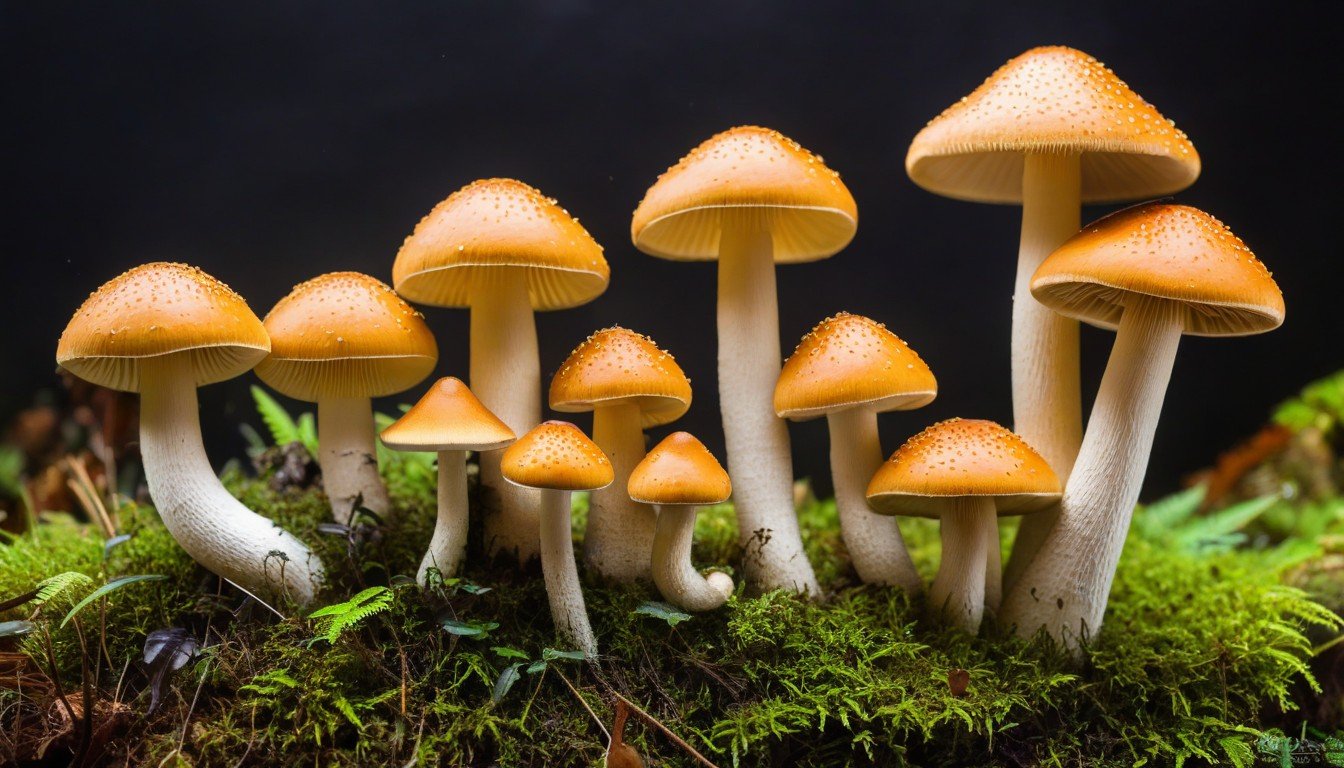
When it comes to following a gluten-free diet, it’s crucial to understand the risks of cross-contamination. Although mushrooms themselves are gluten-free, the risk of contamination is always present when they are harvested, processed, or cooked in certain environments.
Cross-contamination occurs when gluten-containing foods come into contact with gluten-free foods, causing contamination. For example, if mushrooms are processed on equipment that also processes gluten-containing foods, there is a risk of cross-contamination.
To ensure the mushrooms you consume are free from gluten, it’s important to take precautions such as:
- Reading labels carefully to identify potential sources of gluten in mushroom-based products
- Choosing mushrooms that are harvested, processed, and packaged in a gluten-free environment
- Cleaning kitchen utensils and equipment thoroughly before preparing gluten-free mushroom dishes
- Being mindful of shared cooking surfaces and storage containers that may have been in contact with gluten-containing foods
By taking these precautions, you can reduce the risk of cross-contamination and safely enjoy delicious gluten-free mushroom dishes.
“It’s essential to be cautious when preparing or purchasing mushrooms to avoid cross-contamination risks,” says nutrition expert Alice Smith. “By staying vigilant and informed, you can ensure the safety of your gluten-free diet.”
Precautions for Gluten-Intolerant Individuals
For individuals with gluten intolerance, it’s essential to take precautions when consuming mushrooms or mushroom-based products. While mushrooms are naturally gluten-free, there are potential risks of cross-contamination during production or preparation. Here are some tips to keep in mind:
- Read labels carefully to ensure that the product is certified gluten-free
- Avoid mushroom products that may contain wheat or gluten-based ingredients, such as flavored mushroom seasonings or coatings
- Be cautious when ordering mushroom dishes when dining out, and ask about the ingredients and preparation methods
- When preparing mushrooms at home, thoroughly wash them and use separate utensils and cooking surfaces to prevent cross-contamination
By taking these precautions, individuals with gluten intolerance can safely enjoy the nutritional benefits and delicious flavor of mushrooms.
Gluten-Free Mushroom Recipes
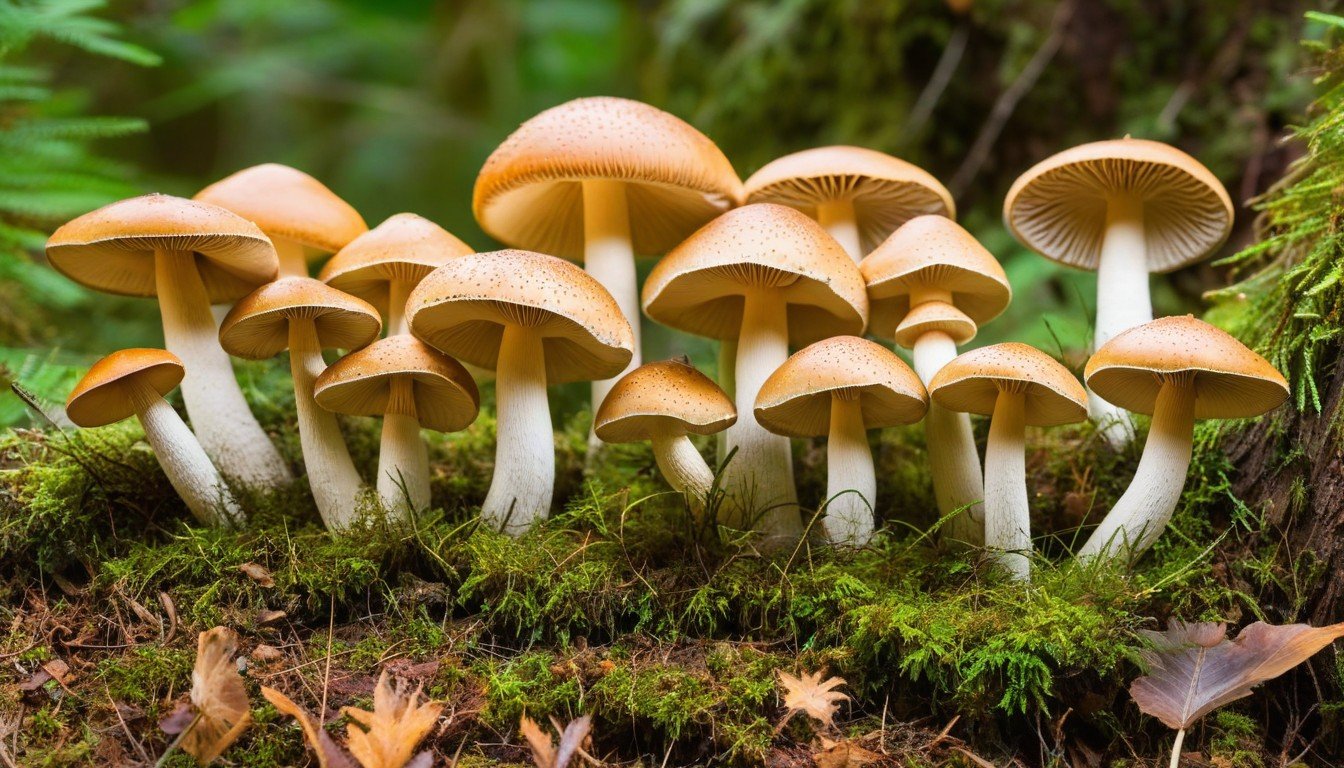
Looking for tasty and healthy gluten-free meals? Look no further than these delicious mushroom-based recipes that will satisfy any palate. Not only are mushrooms a great source of nutritional value, but they are naturally gluten-free, making them a safe addition to any gluten-free diet. Here are a few recipe suggestions to inspire your next gluten-free meal:
1. Mushroom and Quinoa Stuffed Peppers
These stuffed peppers are packed with a protein-rich quinoa and mushroom filling, creating a satisfying and healthy main dish that is entirely gluten-free. With hints of garlic, paprika, and cumin, this recipe is not only delicious but also easy to prepare. Ingredients:
Ingredients | Instructions |
|---|---|
1 cup cooked quinoa | Preheat the oven to 400°F. Cut the tops off the peppers and remove the seeds and membranes. In a large bowl, mix together the cooked quinoa, mushrooms, garlic, spices, and cheese. Stuff the peppers with the mixture and place in a baking dish. Bake for 30-35 minutes, or until the peppers are tender and the filling is heated through. |
4 bell peppers | |
1 cup sliced mushrooms | |
2 cloves garlic, minced | |
1 teaspoon paprika | |
1/2 teaspoon cumin | |
1/2 cup shredded cheese |
2. Mushroom and Spinach Risotto
This creamy and flavorful risotto combines mushrooms, spinach, and parmesan cheese, creating a satisfying and comforting meal that is also gluten-free. With a few simple steps, you can create a restaurant-quality dish that will impress your guests. Ingredients:
Ingredients | Instructions |
|---|---|
1 pound mixed mushrooms, sliced | In a large pot or Dutch oven, heat the olive oil over medium heat. Add the sliced mushrooms and cook until browned, about 10 minutes. Remove the mushrooms from the pot and set aside. In the same pot, melt the butter over medium heat. Add the onion and garlic and sauté until soft, about 5 minutes. Add the rice and stir to coat with the butter. Pour in the white wine and simmer until the liquid is absorbed, stirring constantly. Add the chicken broth, 1/2 cup at a time, letting each addition absorb before adding more. Stir in the mushrooms and spinach. Cook until the rice is tender and creamy, about 20-25 minutes. Add the parmesan cheese and stir until melted. Serve hot. |
1 onion, diced | |
2 cloves garlic, minced | |
1 cup arborio rice | |
1/2 cup white wine | |
4 cups chicken broth | |
4 cups baby spinach | |
1/2 cup grated parmesan cheese | |
2 tablespoons olive oil | |
2 tablespoons butter |
Whether you’re craving a comforting risotto or a protein-packed stuffed pepper, these gluten-free mushroom recipes are sure to delight your taste buds. Enjoy!
Alternative Protein Sources for Gluten-Free Diets
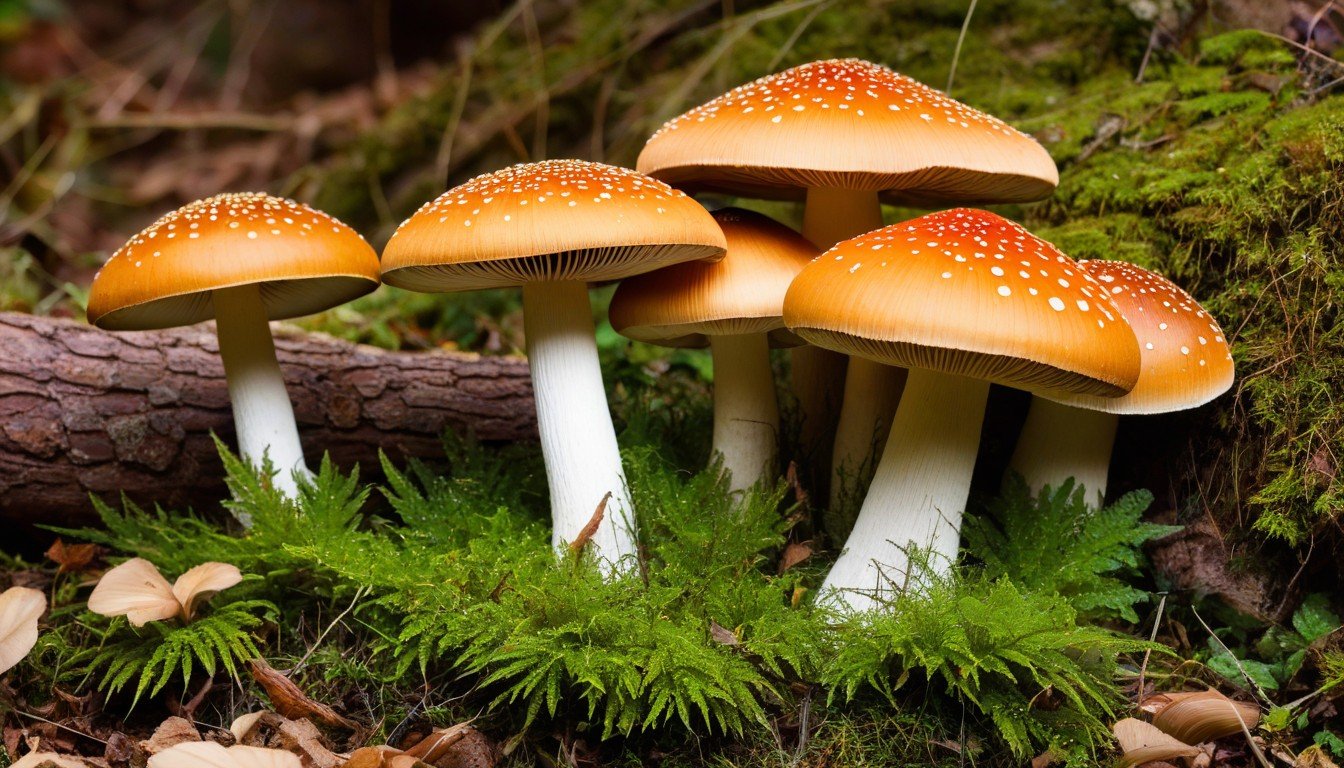
If you’re on a gluten-free diet, it’s important to ensure that you’re still getting enough protein in your diet. Luckily, there are plenty of alternative protein sources that are perfect for gluten-free diets. Here are some options to consider:
Protein Source | How to Use It |
|---|---|
Quinoa | Use it as a substitute for rice or pasta, or in salads and other dishes |
Legumes (beans, lentils, chickpeas) | Add them to soups, stews, salads, or use them as a vegetarian protein source in entrees |
Nuts and seeds | Use them as a snack, add them to salads or smoothies, or use them in gluten-free baked goods |
Lean meats, poultry, and fish | Grill, bake, or sautee for a delicious and protein-packed meal |
By incorporating these alternative protein sources into your diet, you can ensure that you’re getting the nutrients you need while staying gluten-free.
Tips for Safe Gluten-Free Dining
Dining out can be a stressful experience for individuals with gluten intolerance, but following these tips can help ensure you have a safe and enjoyable dining experience:
- Do your research: Before selecting a restaurant, research their gluten-free options and protocols. Many restaurants have a separate gluten-free menu or can modify dishes to accommodate dietary restrictions.
- Communicate your needs: When making a reservation or ordering, clearly communicate your gluten intolerance and any other dietary restrictions to the waiter or chef. They can provide guidance on menu items that are safe for you to consume.
- Avoid cross-contamination: Ask about the restaurant’s protocol for avoiding cross-contamination, such as using separate utensils, cookware, and preparation areas. Be cautious of shared fryers or grills.
- Prioritize simple dishes: Complex dishes or sauces may have hidden sources of gluten. Opt for simple dishes with whole ingredients to minimize the risk of consuming gluten.
- Bring your own gluten-free sauces or condiments: Consider bringing your own gluten-free soy sauce or other condiments to ensure you have safe options for flavoring your meal.
- Be cautious of alcohol: Beer, some wines, and certain cocktails may contain gluten. Stick to spirits like vodka or gin mixed with gluten-free mixers to avoid inadvertently consuming gluten.
- Trust your instincts: If something doesn’t feel right or you’re unsure about a menu item, don’t be afraid to speak up or choose a different dish.
By following these tips, you can enjoy dining out with peace of mind and continue to adhere to your gluten-free diet.
Conclusion
After exploring the topic of mushrooms and gluten, it is clear that mushrooms are a safe option for those following a gluten-free diet. They are a nutritious food source and can be enjoyed in a variety of dishes.
However, it is important to be aware of potential cross-contamination risks and to take precautions when consuming mushrooms or mushroom-based products.
By understanding the basics of gluten-free diets, identifying common sources of gluten, and utilizing alternative protein sources, individuals with gluten intolerance can maintain a balanced and satisfying diet.
Additionally, following safe gluten-free dining tips while eating out can help ensure a positive and enjoyable dining experience.
Overall, incorporating mushrooms into a gluten-free diet can provide a delicious and nutritious addition to meals, with the assurance of safe and allergy-friendly eating.
FAQ
Do mushrooms contain gluten?
No, mushrooms are naturally gluten-free and safe to include in a gluten-free diet.
What is gluten and why is it a concern?
Gluten is a protein found in wheat, barley, and rye. It can cause digestive issues and other health complications in individuals with celiac disease or gluten intolerance.
What are the basics of a gluten-free diet?
A gluten-free diet involves avoiding foods that contain gluten, such as wheat-based products, and opting for gluten-free alternatives like rice, quinoa, and corn.
What is the nutritional value of mushrooms?
Mushrooms are low in calories and fat, while being a good source of vitamins, minerals, and dietary fiber. They can be a nutritious addition to a balanced diet.
What are common sources of gluten?
Common sources of gluten include bread, pasta, pastries, cereals, and some processed foods that use wheat, barley, or rye as ingredients.
Are mushrooms gluten-free?
Yes, mushrooms are naturally gluten-free and can be enjoyed by individuals following a gluten-free diet.
What are the potential risks of cross-contamination with gluten?
Cross-contamination can occur when gluten-containing foods come into contact with gluten-free foods, leading to unintentional gluten ingestion. It’s important to avoid cross-contamination when cooking or dining out.
What precautions should individuals with gluten intolerance take when consuming mushrooms?
Individuals with gluten intolerance should ensure that mushrooms and mushroom-based products they consume are certified gluten-free and free from potential cross-contamination.
Can you share some gluten-free mushroom recipes?
Yes, there are numerous gluten-free mushroom recipes available, including stuffed mushrooms, mushroom risotto, and grilled portobello mushroom burgers.
What are some alternative protein sources for gluten-free diets?
Alternative protein sources for gluten-free diets include legumes, nuts, seeds, tofu, tempeh, and quinoa. These options are suitable for individuals following a gluten-free diet.
What are some tips for safe gluten-free dining?
Tips for safe gluten-free dining include researching and selecting restaurants that offer gluten-free options, communicating your dietary needs to the staff, and double-checking ingredients and cooking methods.

